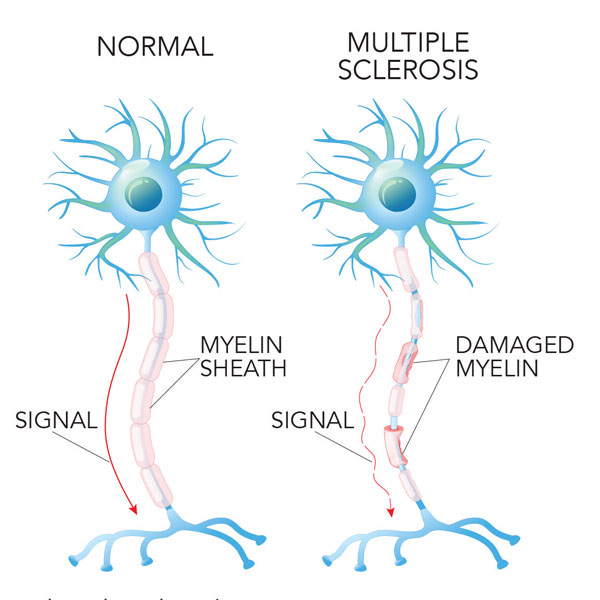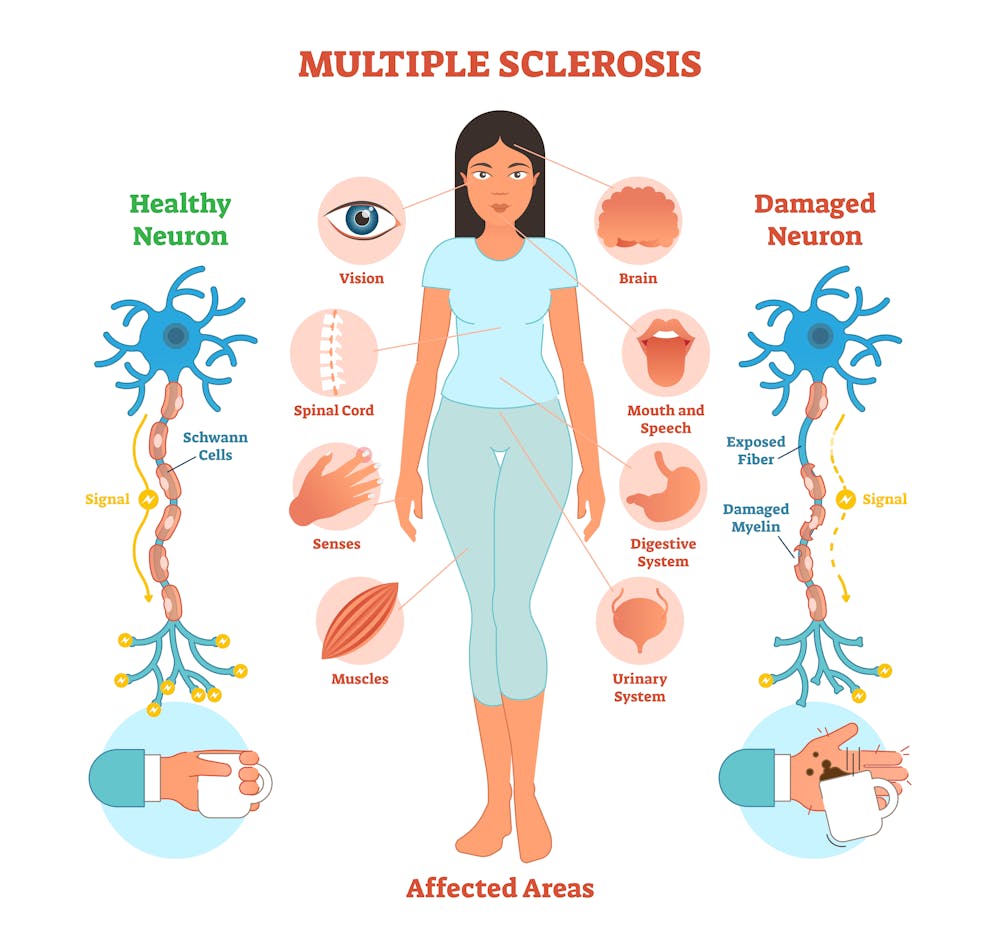Multiple sclerosis (MS) is a chronic, often progressive autoimmune disease that “short circuits” the central nervous system (CNS) by damaging the sheaths of nerve cells in the brain, optic nerves, and spinal cord. Symptoms can include numbness, impairment of muscular coordination and severe fatigue from inflammation, and tissue damage.

WHAT CA– USES MS
MS is a spectrum disease because of the scarring caused by the attacks at multiple sites in the CNS. It varies in its severity and the pace at which it affects the functioning of individuals. However, the underlying mechanism (damage to the myelin sheath) is always the same. The most common age of onset is 20-30 years old and it affects women almost 3 times as often as men. It primarily affects individuals of northern European ancestry, though the reason is unknown.
WHAT KIND OF SUPPORT EXISTS FOR MS PATIENTS
According to Dr. Barbara Giesser, Clinical Director of UCLA MS Program, more than 1 million people in the United States are diagnosed with MS, and more than twice that many worldwide. Even so, this debilitating disease takes a huge toll on everyone involved.

WHAT IS THE TREATMENT FOR MS
Treatment for MS typically includes a combination of disease-modifying drugs, rehabilitation, and lifestyle. Disease-modifying therapies are costly and have significant adverse effects. This is why lifestyle and wellness strategies are critical for individuals with MS. Because diet, exercise, and healthy habits improve function, patients with MS have been encouraged to practice yoga to promote strength, endurance, flexibility, well-being, and a sense of calm and harmony. The most widely recognized forms of yoga include yoga asana (postures) and breathing exercises. Doing specific yoga postures can help manage symptoms of MS and improve mobility and quality of life.
WHY PRACTICE YOGA IF YOU HAVE MS
According to a pilot study published in the Journal of MS Care, here are five reasons why you should practice yoga asana if you have MS:
-
Improves Balance and Gait
- Consistent yoga practice increases the range of movement and eases pressure at the joints.
- Long-term benefits include reduced risk of injury or fall, making it easier to walk, balance and move about in daily life.
-
Improves Strength and Coordination
- During yoga practice, practitioners are required to hold a single position for an extended period of time. They must use body weight and strength to move fluidly through poses.
- The more multiple sclerosis patient practices yoga, the more their body can tone and strengthen through the movements. Over time, a regular practice can help to increase muscle mass and lean out the body.
-
Improves Fatigue
- Yoga emphasizes focus on the breath, which connects the mind and body, and teaches the student to be present, in the moment.
- This calming effect on the mind and the body reduces fatigue. The more focused the mind is during yoga practice, the more present the patient becomes.
-
Improves Overall Health
- Yoga can be modified to be a high- or low-intensity form of exercise.
- Studies have shown that with a regular yoga practice, students become more mindful about food choices and how they fuel their bodies. This, in turn, lead to an improved overall health.
-
Controls Inflammation
- Research has found lower levels of inflammation and significantly decreased levels of cortisol when practicing yoga asana and pranayama (breath regulation).
If you or someone you love is suffering from MS, consider adding yoga to your daily routine. It may have profound effects on your quality of life.
For more information on MS, visit the National Multiple Sclerosis Society, a non-profit organization that provides support for individuals with MS.
